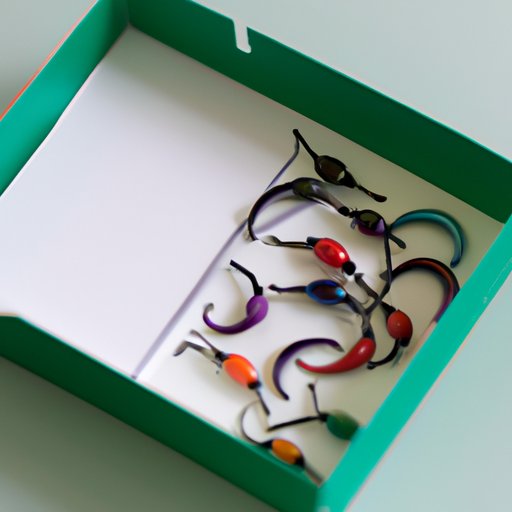
I. Introduction
Fishing can be an enjoyable pastime for people of all ages and experience levels. However, getting started in fishing can be a daunting task, especially when it comes to the technical aspects of setting up your equipment. One critical aspect of fishing that beginners often struggle with is adding weight to their fishing line. In this article, we will take a comprehensive look at how to put a weight on a fishing line to enhance your chances of catching fish.
II. Why Add Weight to a Fishing Line
Adding weight to your fishing line is essential in many types of fishing scenarios. One of the main reasons to add weight is to help your bait or lure reach the desired depth. When fishing in deeper waters or fast-moving currents, weight helps your bait or lure sink without getting swept away by the current. Additionally, adding weight can help to improve sensitivity, making it easier to detect when a fish bites.
III. Materials for Different Scenarios
There are several materials to consider when choosing a weight for your fishing line. Some of the most popular types of weights include split shot, egg sinkers, barrel sinkers, and bullet-shaped sinkers. The type of weight you choose largely depends on the type of fish you are trying to catch and the fishing scenario. For example, if you’re fishing in deep water, a heavier weight is necessary to reach the bottom. In a stream or river, you may opt for a lighter weight that won’t get caught on rocks or debris. It’s essential to choose the right weight for the conditions and your desired catch.
IV. Step-by-Step Guide
Here’s a step-by-step guide to help you add a weight to your fishing line:
- Start by tying your fishing line to your hook or lure using a knot of your choice.
- Slide the weight onto the mainline, so it sits between your hook and the fishing rod’s tip.
- Pinch the open end of the weight with a pair of pliers, so it securely fastens to your fishing line.
- Use another pair of pliers to crimp the pinch weight close to the fishing line to secure it in place.
- Test the weight by holding the hook and gently lifting the fishing rod’s tip. If the weight slides down the line, add another crimp to secure it further up the line, and test again.
- Once the weight is securely attached, it’s time to add bait or a lure and cast your line.
Remember only to crimp when you’re sure the weight is positioned where you want it. Moving it afterward is difficult and requires an adjustment number of steps.
V. Using the Right Knot
Using the right knot when securing your weight to your fishing line is crucial. An improper knot can cause the weight to slide down the line or become detached altogether, resulting in lost equipment and a missed chance at catching a fish. The most popular knots for securing fishing weights are the Palomar and the Clinch knots. The Palomar knot is knot secure and considered the best for beginners.
VI. Common Mistakes
Several common mistakes come with putting a weight on a fishing line. One of the most common is selecting the wrong weight size for the fishing conditions and water depth. Always choose the correct weight for the circumstances and your target catch. Another mistake is attaching the weight incorrectly or tying the knot incorrectly. Before casting your line, test the weight and the knot to ensure they’re secure in position. Lastly, avoid overloading your fishing line with too much weight, which can cause it to break.
VII. Expert Tips and Tricks
Here are some expert tips and tricks to help you put a weight on a fishing line:
- If you’re fishing in a rocky or debris-filled area, consider using a slip sinker that can quickly get off your line if it gets caught.
- Always check the fishing regulations of the place where you’re fishing to ensure you use appropriate equipment and techniques.
- If you’re unsure whether you have positioned your weight correctly, shake your fishing rod’s tip gently. When correctly secured, your weight should not move when shaken.
- If you’re adding weight to your line during the day, place a bright-colored or reflective tube on the line. This allows you to see where the weights are on the line and make adjustments quickly.
- Be patient when fishing. Finding the right location and conditions for your bait and weight can take time. Be patient and move to different areas if you’re not getting nibbles or bites.
VIII. Video Tutorial
If you’re a visual learner, check out this video tutorial that shows how to put a weight on your fishing line:
IX. Conclusion
Putting a weight on a fishing line is an essential skill to master, and with this comprehensive beginner’s guide, you’ll be well on your way to enhancing your fishing experience. Remember to take into account the fishing conditions, select the right weight and knot, and avoid common mistakes. Follow the expert tips and tricks and be patient when fishing, and you’ll be sure to enjoy many successful fishing trips in the future.





